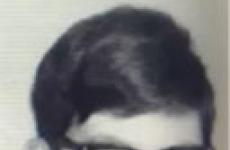Andrei rublev's trinity icon description for children. Icon of the Holy Trinity
Andrey Rublev, "Trinity"
The art of Andrei Rublev is one of the highest achievements of Russian and all world art. Rublev was a monk, for a long time he lived in the Trinity-Sergius Monastery - one of the major cultural centers of Russia at that time. In 1405 he, together with the remarkable icon painter Theophanes the Greek and Prokhor from Gorodets, participated in the painting of the Annunciation Cathedral in the Moscow Kremlin. Some of the icons of this cathedral in the iconostasis that have survived to this day belong to Rublyov's brush. In 1408, together with his friend Daniel Cherny, he painted the Assumption Cathedral in Vladimir. The surviving frescoes and icons dedicated to the theme The last judgment, are now kept in the Tretyakov Gallery in Moscow and in the Russian Museum of St. Petersburg.
The pinnacle of Andrei Rublev's creativity was the Trinity icon, created by him in 1411. Beautiful, pensive figures of three angels sitting at a meal. Leaning towards each other, they seem to be conducting a quiet conversation. The symbolism of the icon (the Trinity is the unity of the Divine in three persons: God the Father, God the Son, God the Holy Spirit) does not obscure its religious content. Peace, harmony and unanimity - this is what the artist calls on his compatriots. Rublev's "Trinity" was written by him "in memory of St. Sergius" - for the Trinity Cathedral, founded by the saints of the monastery. The prototype of this amazing icons some researchers see the fresco of Theophanes the Greek in a similar theme; however, if the angels of the latter are harsh, like the ancient ascetics, and could form a proper retinue for the Savior, the Bright Eye, then on the Rublev icon the rest of the angels is as bright as their faces and the gold of their halos are bright.
The composition of the arrangement of angels, the gracefulness of their silhouettes impart extraordinary harmony to this icon. Its colors are very beautiful and pure, especially pale blue, which, in combination with golden tones, seems to recreate the color of the blue sky.
After 1422 Rublev painted the Trinity Cathedral in Sergiev Posad. Unfortunately, these frescoes have not survived. The last years of their lives Andrei Rublev and Daniil Cherny spent in the Andronikov monastery in Moscow. They painted the frescoes of the Transfiguration Church of this monastery. This was the last work of the great icon painter, which also has not survived. In the monastery where he spent last years life Andrei Rublev, obviously, rests and his remains. Alas, this cannot be reliably confirmed. During the late reconstruction of the monastery among building materials a slab with the inscription "Andrei Rublev" was found, but it was barely possible to sketch it - the next day the slab, broken into pieces, was used for the foundation.
It is not always possible to accurately establish the authorship of Rublev, many of the works have not survived and are known only from fragments, descriptions or references in ancient Russian sources. There is no doubt that his brushes belong to the icons of the Zvenigorod rank, icons for the multi-tiered iconostasis of the Assumption Cathedral in Vladimir. Experts attribute the authorship of many other works to Andrei Rublev, although there is no exact evidence.
The main dogma of Christianity consists in the doctrine of the three persons of one in essence God, who are The Most Holy Trinity. These three incarnated hypostases in Him - the Son and God the Holy Spirit are not fused with each other and are inseparable. Each of them is a manifestation of one of its essences. The Holy Church teaches about the complete unity of the Trinity, who creates the world, provides for it and sanctifies it.
The decoration of the table also attracts attention. If in Rublev it is limited to only one bowl with the head of a calf, which is also full symbolic meaning and directs the viewer's thoughts to reflections on the atoning sacrifice of the Son of God, then in this case the painter emphasized the rich table setting, combined with the exquisite painting of the armchairs. Such an abundance of decorativeness is not characteristic of the icon.
Trinity of the New Testament
The plot of the above icons is taken from Old Testament therefore they are called "Old Testament Trinity". But one cannot ignore the frequently encountered images of the New Testament Trinity - another version of the image of the Divine Trinity. It is based on the words of Jesus Christ, quoted in the Gospel of John: "I and the Father are one." In this plot, three Divine hypostases are represented by images of God the Father in the form of a gray-haired old man, God the Son, that is, Christ, in the form of a middle-aged husband and the Holy Spirit in

Variants of the image of the New Testament Trinity
This plot is known in several iconographic versions, differing from each other, the main images of the position, the figures depicted in it. The most widespread of them - "Soprestol", represents the frontal image of God the Father and God the Son, sitting on thrones or clouds, and the Dove - the Holy Spirit - hovering over Them.
Another well-known story is called "Fatherland". In it, God the Father is represented seated on a throne with a baby sitting on his lap and holding a sphere in blue radiance in his hands. Inside it is a symbolic image of the Holy Spirit in the form of a Dove.
Controversy over the possibility of portraying God the Father
There are other iconographic versions of the New Testament Trinity, such as "The Crucifixion in the bosom of the Father", "The Eternal Light", "The Sending of Christ to Earth" and a number of others. However, despite their widespread prevalence, among theologians for centuries, disputes about the legitimacy of depicting such plots have not subsided.
Skeptics appeal to the fact that, according to the Gospel, no one has ever seen God the Father, and therefore, it is impossible to portray him. In support of their opinion, they mention the Great Moscow Cathedral of 1666-1667, the 43rd clause of the resolution of which prohibits the image of God the Father, which at one time gave rise to the withdrawal from use of many icons.

Their opponents also base their assertions on the Gospel, citing the words of Christ: "He who has seen Me has seen My Father." One way or another, but the New Testament Trinity, despite the controversy, is firmly included in the plots of icons revered Orthodox Church... By the way, all of the above versions of the New Testament Trinity appeared in Russian art relatively late. Until the 16th century, they were unknown.
For more than six hundred years, the "Trinity" has lived in our world: an icon of Rublev, capable of awakening in the soul of an attentive viewer a powerful sense of the beautiful and the sublime.
It was written during the hard times on the earth, for many years brutally oppressed by the Gentiles and torn apart by the fratricidal wars of the Russian princes.
Thus, in the midst of the suffering and strife of the human world, faith in the saving perfection of God was reaffirmed by spiritual exploit.
"The Most Holy Trinity" of the Monk Andrei Rublev
The famous creation of the great master "translates" into figurative language a very complex Christian concept is the inseparability and non-fusion of the three hypostases of God: the Father, His Son Christ and the Holy Spirit.

At the same time, the then widespread icon-painting canon - "The hospitality of Abraham" (this, by the way, is another, little-known name of the most famous work of the reverend icon painter) is being reinterpreted.
Such images reproduced the biblical legend about the visit of the Lord to the house of the ancestor Abraham under the guise of three wanderers.
Rublev's Trinitarian face, in comparison with the Old Testament canon, is emphatically extrahistorical. There are no host characters, and only a small portion of their home is painted in the background. The image of the blooming oak of Mamre - a messenger about the miracle of the late birth of the firstborn in Abraham - was transformed into conventional image branches. Instead of a generous treat, there is only one cup.
The idea of continuity, the eternal formation of the action, is also emphasized by the deliberate incorrectness of the figures: both bowls - on the table and formed by the figures of angels - are asymmetric in shape.
The figures of angels seem to be inscribed in a circle - oldest symbol divine perfection. The central contour of the silhouettes of the two extreme characters forms a bowl, repeating the outline of the bowl on the table: indivisible indissolubility seems to give rise to inner space.

The Chalice standing in front of the angels is the central point and the main semantic element. The vessel is a symbol of God's great sacrifice for the sake of eternal life of people. The artist reinterprets this fundamental theme of the Christian faith.
Traditionally, the main color in addressing the theme of redemption has been cinnabar, blood-scarlet. For Rublev, the primacy of "stuffed cabbage" means everything heavenly and spiritual, peace and tranquility. Blue leads to higher causes and ultimate goals of suffering: everything leads to God's plan for peace and good. Not the Old Testament alarming foreboding of sacrifice, but the beauty of spiritual achievement.
The three faces of God are also depicted in an innovative way. They are equal: there are no literal indications of the hypostasis, no one looks at the viewer. But each is endowed with his own individuality - through the colors of clothes, symbolic gestures, direction of gaze. Laconicism pictorial language draws attention to the silent dialogue of the Trinity over the Chalice of Suffering.
History of creation and a brief description of the icon

Andrew, in middle age, goes to a monastery and takes monasticism, researchers believe that this was before 1405. In the same year, together with Theophanes the Greek, he decorated the iconostasis of the Annunciation Cathedral in the Moscow Kremlin. Three years later, together with Daniil Cherny, he painted the Assumption Cathedral and the iconostasis in Vladimir.
After, until 1422 he worked in Zvenigorod. Then for five years, together with Daniil Cherny, he supervised the decoration of the Trinity Cathedral of the Trinity-Sergius Monastery. Then he painted the Spassky Cathedral of the Andronikov Monastery in Moscow, where he died in 1430.
Andrei Rublev did not sign his works: preserving the authorship of "Trinity" is a kind of miracle. And here unanimous opinion historians have no information about the time of creation. Some believe that the "Trinity" appeared in 1411 to decorate the wooden Trinity Church. Others date it from 1425 to 1427 - the time of work on the iconostasis of the white-stone Trinity Cathedral.

The face is written on wood in the form of a vertical image of three angels sitting at a table. The background is an intermittent sequence of images of the upper part of the house, an oak branch and a mountain. The lines of the characters' figures form a sphere.
In the center of the picture, in the middle of the throne, there is a bowl with the head of a calf. The hands of the angels sitting on the left and in the center bless the vessel. The image has no dynamics, no active action - it is full of motionless contemplation.
Subsequently, the work was hidden under a gold salary for more than five centuries. First - by order of Tsar Ivan the Terrible in 1575, another quarter of a century later - by Tsar Boris Godunov. Three times the drawing was updated by the icon painters of Palekh. And only in 1904 the icon went from the Holy Trinity Sergius Lavra to the State Tretyakov Gallery for restoration.
The work was finally handed over to her in 1929 - it is here to this day. A reproduction was made for the cathedral (a copy of Baranov and Chirikov). On the basis of the acquired "Trinity", restorers were able to identify and restore other works written by Rublev.
Countless works of scientists and art critics are devoted to the analysis of Andrei Rublev's "Trinity". But they are just attempts to tell the inexplicable, because they claim to be the ultimate truth. The icon painter, on the other hand, painted the inexpressible in colors - and created a creation that rivals the world's masterpieces. Because he knew that the icon is only a sign of the divine on earth.
In one of the halls of the Tretyakov Gallery, hangs one of the most famous and famous icons in the world - "Trinity", painted by Andrei Rublev in the first quarter of the 15th century. Three angels gathered around the table on which the sacrificial bowl stands for a quiet, unhurried conversation. The contours and folds of their robes are fragile and weightless, the harmony of blue, cornflower blue, pale green, golden yellow colors is pure. It seems at first that this icon is infinitely far from the real life of the 15th century with its stormy passions, political strife, and forays of enemies. But is it?
Details life path Andrei Rublev is almost unknown. Like any medieval master, he did not sign his works; his name was rarely mentioned in the annals. Nevertheless, careful research by historians of ancient Russian art suggests that he was a monk of the Trinity-Sergius Monastery, for whose Trinity Cathedral he wrote his masterpiece. Let us recall that both the founder of the monastery, Sergius of Radonezh, and his successors supported the unifying policy of the Moscow princes, their struggle against the Mongol-Tatar yoke. But less than half a century after the Battle of Kulikovo, in which the combined Russian forces defeated the Mamai horde, Muscovite Russia found itself on the verge of a bloody feudal strife. In the "Trinity", according to theological concepts, three angels symbolize unity, harmony. Rublev visibly, in a perfect artistic form, embodies this symbolism of indestructible unity. Compositionally, the angels are inscribed in a circle, the colors of their robes complement and echo each other. Peace, harmony, love - this is what Andrei Rublev called for his contemporaries, and there was no more important, more consonant time in that era.
History of creation the greatest icon of humanity is approximately the following. Abbot Nikon (who became the abbot of the Trinity-Sergius Monastery after Sergius of Radonezh) was very sorry that the newly erected white-stone Trinity Cathedral was not decorated with painting. Foreseeing his imminent death and wishing to complete the decoration of the cathedral during his lifetime, Nikon called for the work of Andrei Rublev and Daniil Cherny - renowned painters, "fair nobles, superior to all and perfect in virtue." The work was not only about painting the temple with frescoes. In addition, it was necessary to write a large number of icons for a high multi-tiered iconostasis. During his lifetime, Abbot Nikon wanted not only to see the temple decorated, but also to see an icon painted, which was supposed to become the main monument "in praise of Sergius of Radonezh."
It was possible to start painting the cathedral walls only a year after its construction, when the frescoes would no longer be threatened by the sediment of the building. But work on interior decoration the temple could begin immediately after the completion of its construction. And the first concern was the creation of the main icon - the "Trinity", which was supposed to stand on the right side of the royal gates.
"Trinity" from the moment of its creation was the favorite icon of ancient Russian artists, served as a model for countless copies and reproductions. But the fate of Andrei Rublev himself and many of his creations is dramatic and, at first, even inexplicable. A humble monk, he devoted his whole life to creating frescoes and icons on religious subjects. Respected and widely known, even during his lifetime he was called "reverend", after some time he was forgotten by his descendants, and many of his creations were lost. Even at the beginning of the 20th century, some experts could not reliably name any of his works. Only the name remained, and even then only lovers of ancient Russian art knew it. Even in the famous encyclopedia of Brockhaus and Efron, published in 1890-1907, there was no place even for a simple mention of Andrei Rublev.
Now we know that Andrei Rublev lived in a difficult, but significant period of Russian history. Bleed and humiliated by a foreign yoke, Russia got up from her knees, straightened her shoulders and began to prepare for liberation from the yoke of the Golden Horde. It was a time of joy and at the same time bitter, a time of brilliant victories and cruel defeats. The latter include the sad events of 1408, when Khan Edigi invaded the Russian land. The devastating invasion of the Mongol-Tatars once again showed that the Russian princes need to stop internecine hostility, live in peace and harmony, only by uniting, they can finally get rid of the "evil Tatar". Some scientists believe that it was at this time (about 1411) that Andrei Rublev created his best piece- "Trinity", which in those days had a special meaning. True, others argue that the Trinity was written in the 1420s, when (as indicated above) the white-stone Trinity Cathedral was erected in the monastery.
The Old Testament Trinity was a symbol of unity. Back in the middle of the XIV century, founding his monastery, Sergius of Radonezh (as it is said in one of his lives) "erected the temple of the Trinity ... so that by looking at the Holy Trinity, fear of the hated separation of the world would be conquered." On a rather large board, Andrei Rublev depicted the Old Testament Trinity - the appearance of God to Abraham in the form of three angels.
“And the Lord appeared to him at the oak grove of Mamre, when he was sitting at the entrance to his tent (his), in the heat of the day. He lifted up his eyes and looked, and, behold, three men stood opposite him. Seeing he ran to meet them from the entrance to the tent (his) and bowed to the ground, and said: Master! If I have found favor in your eyes, do not pass by your servant;
And they will bring a little water, and wash your feet; and rest under this tree, and I will bring bread, and you will strengthen your hearts; then go (on your way); as you walk past your servant. They said: do as you say. And Abraham hurried into the tent to Sarah and said (to her): Quickly knead three sats of the best flour and make unleavened bread. And Abraham ran to the flock, and took a tender and good calf, and gave it to the lad, and he hastened to prepare it. And he took the butter and milk and the calf that had been prepared, and set it before them; and he himself stood beside them under a tree. And they ate. "
The biblical story in the interpretation of Andrei Rublev has lost all those narrative features that were traditionally included in the composition of the icon for this plot. There is no Abraham and Sarah, there is no scene of the slaughter of the calf, even the attributes of the meal are minimized: the angels are represented not as partakers, but as conversing. The angels' gestures, flowing and restrained, testify to the sublime nature of their conversation.
The content of "Trinity" is multifaceted. Its ideological and compositional center is a bowl with the head of a sacrificial calf - a prototype of the New Testament lamb. The "chalice" has come a long way, and throughout the history of mankind it had the meaning of the "chalice of life," "the cup of wisdom," "the cup of the immortal drink." In the Middle Ages, based on it Christian meaning a poetic legend arose about the "Cup of the Grail" from which Jesus Christ drank during the Last Supper. The cup entered Russian folk poetry as "mortal". This theme sounds in epics and "The Lay of Igor's Campaign." For Andrei Rublev and his contemporaries, the "bowl" was closely associated with real life, only on the icon the tragedy of this heroic theme is expressed in him by bright sadness. In Rublev's "Trinity" the "mortal cup" is "the guarantee of the future life." Continuation "
Additional materials:
1) Demina N.A. The Trinity of Andrei Rublev - page 2 - page 3 - page 4 - page 52) The obsession and symbolism of the Trinity - page 2 - page 3 - page 4 - page 5
3) X an artistic analysis of the Trinity - page 2 - page 3 - page 4 - page 5 - page 6 - page 7
The "Trinity" almost immediately becomes a model - at least the Stoglavy Cathedral in 1551 determined that all subsequent images of the Trinity should correspond to the icon of Andrei Rublev.
"Trinity" by Andrei Rublev - a symbol of Russian culture
The story goes that the work was commissioned by the monk-icon painter Reverend Nikon of Radonezh - the second rector after Saint Sergius of the Trinity Monastery, the future Holy Trinity Sergius Lavra. The icon was originally written for the Trinity Cathedral "in praise of Sergius of Radonezh."
The Trinity is the only reliably known icon by Andrei Rublev painted on a blackboard that has survived to this day.
Composition and interpretation
Rublevskaya "Trinity" corresponds to the iconographic plot "Hospitality of Abraham". This is an image of an episode from chapter 18 of the biblical book of Genesis. Three come to the forefather Abraham, and he recognizes God Himself as guests - accepts them with honor and treats them.
The Monk Andrew left in his creation only details devoid of any historicism: the angels sit at the table in a leisurely conversation, on the table is a bowl with the head of a calf, in the background is a building, a tree, a mountain. The figures of Abraham and Sarah are missing.
Each detail of the icon has its own interpretation. The chalice symbolizes the chalice of the Eucharist, and the head of the calf is the sacrifice of the Savior on the Cross. It is interesting that the angels themselves repeat the shape of the bowl in their poses.
The tree, towering over the middle angel, recalls not only the oak from the oak forest of Mamre, under which the historical meeting of the Trinity and Abraham took place, but also the tree of life, the fruits of which man lost as a result of the fall (according to another interpretation - the tree of the Lord's cross, with which man regains the eternal life).
Above the angel on the left relative to the viewer is depicted a building - in the pre-Rublev iconography, the house of Abraham. Here it points to the economy of our Salvation and the Church is the house of God.
A mountain is visible above the right angel. All the manifestations of God in the biblical tradition took place on the mountains: Sinai - the place of the giving of the law, Zion - the Temple (and the descent of the Holy Spirit on the apostles), Tabor - the Transfiguration of the Lord, Golgotha - the Atonement sacrifice, the Oliveon - the Ascension.
It is believed that each angel on the icon depicts the Face of the Trinity. Interpretations vary. According to one of them, the middle angel symbolizes God the Father (as the planter of the tree of life), the left - the Son (as the founder of the Church), the right - the Holy Spirit (as the Comforter who is in the world). In another way, the middle angel symbolizes the Son, as indicated by the color of his clothes, traditional for the images of Christ: crimson and azure. The left angel, the "builder" (that's why the house is depicted behind him) of the Universe is the father.
The image uses the technique of reverse perspective, traditional for medieval fine art - the space of the icon is visually larger than the reality in which the viewer is.
Many researchers pay attention to the fact that "Trinity" was created during the period of confrontation between the Russian princes and Tatar-Mongol yoke and pointed to the need for unity. This interpretation is indirectly confirmed by the fact that he himself Venerable Sergius He worked hard to restore fraternal relations between the princes, and in the Trinity, Consubstantial and Inseparable, he saw the image of unity necessary for all mankind.
Discovery history and current state
In 1575, by order of Ivan the Terrible, "Trinity" was hidden by a gold frame. In 1600 and 1626, Boris Godunov and Tsar Mikhail Fedorovich changed their salaries accordingly.
The heavy golden robe hid the image until 1904, when it was decided to clear the "Trinity" - to restore, restoring its original appearance.
Throughout history, the icon has been renovated several times. The refurbishment was not a restoration - in accordance with the tastes of the era, artists could change proportions, color range and even image composition.
The first renovation of the "Trinity" refers to the period of Boris Godunov's reign, the second, the most catastrophic for the image, to 1636. The icon was renewed for the third time in 1777, and in the 19th century it was renewed even twice.
In 1904, the salary was removed from Trinity; the image presented to the public was made by Palekh masters. The artist V.P. Guryanov cleared several layers and found the image, as it seemed, original: light clothes of angels, in general, a light and bright range of light. Guryanov carried out his own version of the restoration (in fact, the same renovation), and the "Trinity" was hidden again.
The restoration of the "Trinity" was returned in 1918 on the instructions of the Commission for the Protection of Monuments of Art and Antiquity of the Trinity-Sergius Lavra. The commission included the priest Pavel Florensky. The icon had already been significantly damaged and needed special storage, but it was transferred to the collection of the Tretyakov Gallery only in 1929, where it was located before the war. In 1941, "Trinity" was evacuated to Novosibirsk, it returned from evacuation in October 1944 and did not leave the Tretyakov Gallery for more than six decades, not counting the annual (which continues to this day) transfer of the image to the church for the feast of the Trinity in the Church of St. Nicholas at the State Tretyakov Gallery - only in 2007 she was taken to the building on the Crimean shaft. Then the icon suffered during transportation and needed additional strengthening.
Now the icon is kept in a special case. Its condition is stable, although there is irreversible damage: the paint layer lags behind in some places, the image shows traces of nails from the frame. In 2008, a wide public controversy unfolded over the possibility of transferring the "Trinity" to the Holy Trinity St. Sergius Lavra. Then art critics came to the conclusion that this is impossible without significant damage to the masterpiece of Russian painting.
- "Airy", transparent colors, in which our contemporary often sees a special author's intention, creating the color and atmosphere of Rublev's "Trinity", making the figures of angels thin and ethereal - a consequence of restorations and renovations. Initially, the icon was painted with bright colors.
- Priest Pavel Florensky considered the very existence of the "Trinity" by Andrei Rublev as proof of the existence of God (see the work "Iconostasis").
- In the finale of Andrei Tarkovsky's film Andrei Rublev, the viewer sees the image of the Trinity.






